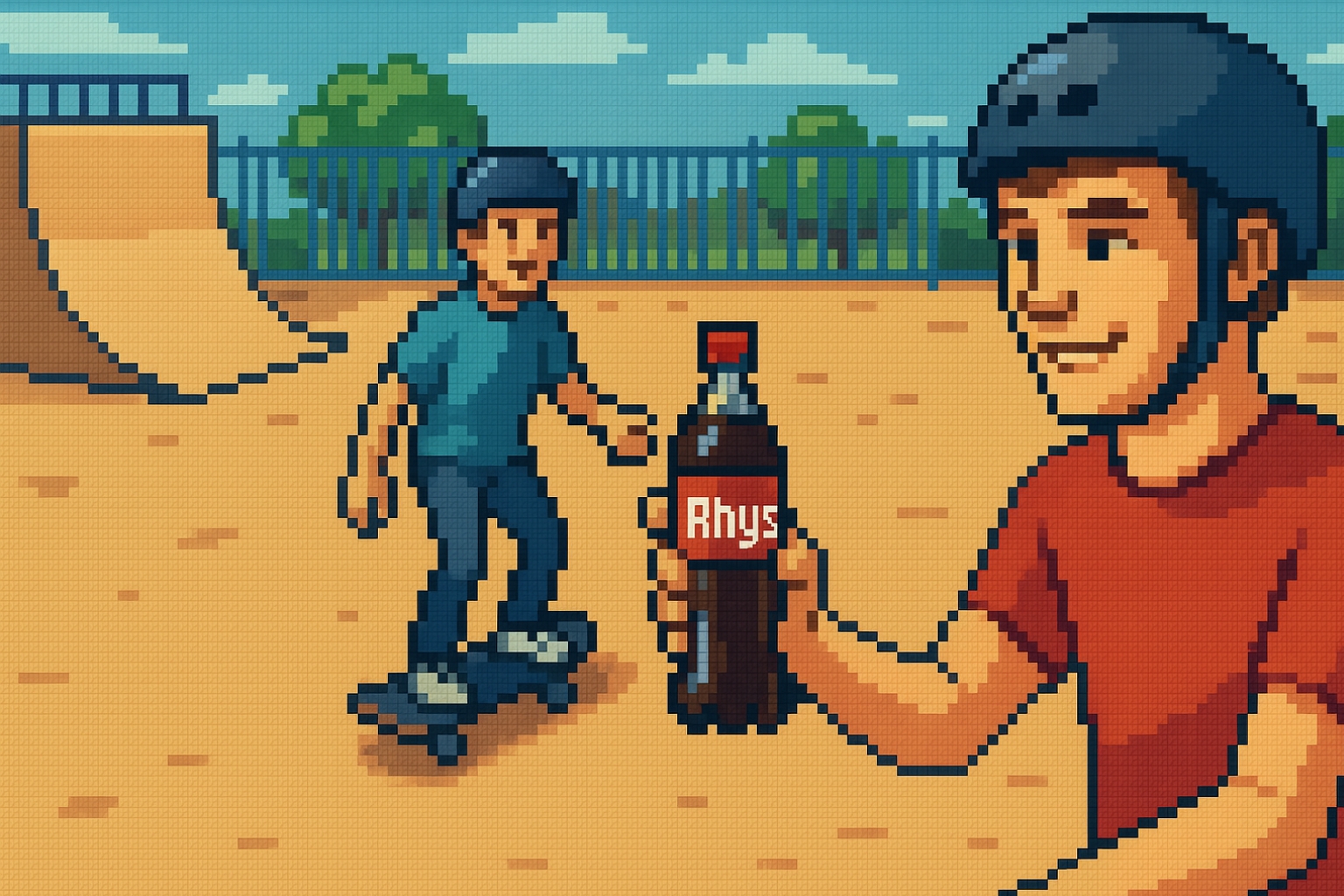Coca-Cola's 2014 "Share a Coke" campaign broke an 11-year sales decline by putting teens' names on bottles. The secret wasn't just personalization. It was rigorous pre-launch testing that de-risked a $250-300K bet and turned it into double-digit sales growth.
Here's how to replicate in AskRally with AI personas, testing whether personalization drives higher purchase intent than traditional branding.
The Experiment Setup: Replicating Coca-Cola's Actual Testing Methods
Coca-Cola's de-risk phase tested four core questions through focus groups and surveys. We'll run the same tests synthetically. Since the underlying AI model that we will use likely has this experiment in their training corpus (they know the outcome of the experiment), I dropped the explicit brand mention and replaced it with "a soda brand" in the stimulus.
Test 1: Name Excitement
You see a "a soda brand" bottle with the name 'Alex' printed where the logo usually is. How would you feel if you saw your own name on a soda bottle like this?
Test 2: Gifting Behavior
Imagine you could buy soda bottles with your friends' names on them instead of the brand logo. Would you buy a bottle with a friend's name to give to them?
Test 3: Cool vs Cheesy
A soda company is replacing their logo with people's first names on bottles. What's your honest reaction to this idea?
Test 4: Social Sharing Intent
A soda company is replacing their logo with people's first names on bottles. How likely would you be to post about this on social media? (1-7 scale)
The Rally Audience
100 AI personas, Americans, all genders, aged 16-24, born between 1990 to 1998. Additionally, in Coca-Cola's survey work, they segmented users by recent consumption behavior that allowed them to track trial rates post-campaign. So I split the AI personas between:
- Current soda drinkers (60%): consumed soda in the past 4 weeks
- Lapsed/infrequent drinkers (40%): have not consumed soda in the past 4 weeks (or used too but now don't)
Update: During the AI persona creation for this experiment, I used all 4 of our supported models, switching every 25 personas. I noticed a few instances where some personas lacked an explicit consumption behavior cue. Sometimes it was clearly specified e.g. "always sipping soda on streams," while in others, it wasn't mentioned at all. Perhaps reflecting the "have not consumed soda" prompt at work. Next time, I think I would explicitly add this behavior through the persona JSON like I did when simulating how G2 reviews impact SaaS renewal, or more simply, via our new in-chat memory feature like when I did coffee demand after movie mentions.
The Results
Test 1: Name Excitement
In Coca-Cola’s “Share a Coke” pre-launch testing, the first question was open ended to prompt emotional and spontaneous reactions. From what reports show, participants reacted with excitement. The overall sentiment from our virtual audience is also positive, with most AI personas finding the idea 'cool,' 'neat,' or even 'the coolest thing ever.' The primary reaction was a desire to purchase the soda, driven by the novelty and the feeling of being recognized.
Test 2: Gifting Behavior
The simulation echoed Coca-Cola’s original findings: the majority of respondents said they would happily purchase a personalized soda bottle for a friend, viewing it as a fun, thoughtful, and socially sharable gesture. Much like in Coca-Cola’s pre-launch testing, people highlighted the emotional appeal and social connection, with many already imagining who they'd gift it to and how they'd share it online. The simulation results here reinforce the original insight that personalization drives not just attention, but action.
Test 3: Cool vs Cheesy
When I asked our synthetic test group to rate the campaign idea somewhere between very cool vs very cheesy, the AI personas leaned heavy towards “somewhat cheesy,” echoing concerns seen in some of Coca-Cola’s original testing where some found it gimmicky or superficial. Coca-Cola did not publicly release precise percentage breakdowns of respondents labeling the campaign "cheesy" or "gimmicky" from their original tests, otherwise we could have run a calibration excersise.
When I asked a follow up question, though, "why do you feel this way?", several participants noted “trying too hard”, comparing it to tourist trinkets or corporate attempts to seem personal. Yet even among critics, there was recognition that it could still “work” as a marketing move, particularly if aimed at those who enjoy novelty and content creation. Coca-Cola addressed this in execution by leaning into authentic user-driven storytelling to avoid overly corporate messaging early in the campaign. When you can anticipate real audience reactions through testing, you don’t just avoid missteps, you unlock the clarity to execute with precision and win with confidence.
Test 4: Social Sharing Intent
This result showed a strong willingness to share, mirroring Coca-Cola’s original insight that social sharing would be a key behavior driver. In the real world, early teen testing revealed that the excitement of discovery and personalization made the bottles inherently “share-worthy,” fueling the viral success of the campaign.
The Strategic Payoff
Coca-Cola's $250-300K testing investment prevented a potential flop and provided execution guidance that flipped a long down trend.
The key insight: Test the psychology first, then build the tactics. Coca-Cola didn't test specific ads or hashtags - they tested whether teens would emotionally connect with personalization. Once validated, they could confidently invest in execution.
Rally lets you run the same foundational validation, testing core behavioral assumptions before executing a campaign playbook. But tapping an AI hive mind can be done for a fraction of the price and in minutes (not months). Ultimately, our synthetic findings align closely with Coca-Cola’s original results, suggesting that synthetic data would have accurately identified this winning campaign opportunity.

